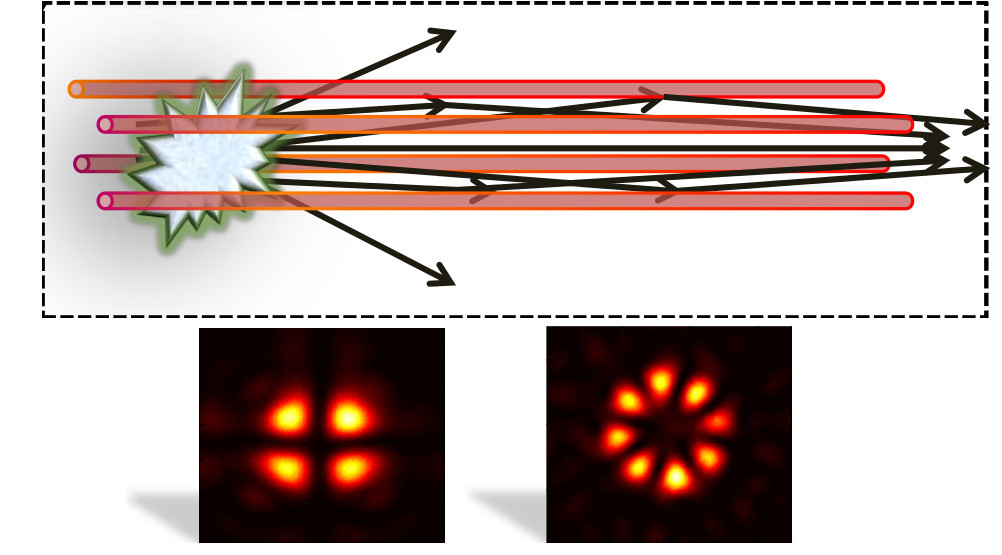American scientists have created an air light guide, which greatly improves the distribution of the laser beam in the air
The propagation of a laser beam in air, especially if its power is high, is rather limited due to interaction with the atmosphere. The laser heats the gas through which it passes, due to which the density changes, and hence the refractive index of the air in the path of the beam. The atmosphere begins to work like a lens scattering a beam. Scientists from the University of Maryland at College Park have figured out how to overcome the negative effects of this effect. To do this, they used several additional lasers located around the main one.

Auxiliary lasers give a short femtosecond flash before the main laser turns on. This flash warms up the air around the path along which the main beam will go, forming an air duct with a zone of high pressure inside and low - around the perimeter. Due to this, the main beam is scattered much less. A similar principle is used in optical fiber - its outer and inner layers have different refractive indices, due to which light propagates with minimal losses, never touching the walls of the fiber. The illustration shows the operation scheme of such a fiber and photographs of its profile when using four and eight auxiliary lasers
The effect of an air light guide will allow improving the signal-to-noise ratio by several orders of magnitude wherever a laser beam travels in the atmosphere over considerable distances - in lidarh, communication systems and laser spectroscopes, such as that installed on the Curiosity rover. In addition, military use is possible, among the sponsors of the study - the US Air Force and the Defense Threat Reduction Agency (DTRA). As you know, last year the laser gun was successfully tested , which is capable of destroying drones and small boats of the enemy. In the future, such lasers could replace expensive missiles, but so far they only work at short distances due to beam scattering.

Auxiliary lasers give a short femtosecond flash before the main laser turns on. This flash warms up the air around the path along which the main beam will go, forming an air duct with a zone of high pressure inside and low - around the perimeter. Due to this, the main beam is scattered much less. A similar principle is used in optical fiber - its outer and inner layers have different refractive indices, due to which light propagates with minimal losses, never touching the walls of the fiber. The illustration shows the operation scheme of such a fiber and photographs of its profile when using four and eight auxiliary lasers
The effect of an air light guide will allow improving the signal-to-noise ratio by several orders of magnitude wherever a laser beam travels in the atmosphere over considerable distances - in lidarh, communication systems and laser spectroscopes, such as that installed on the Curiosity rover. In addition, military use is possible, among the sponsors of the study - the US Air Force and the Defense Threat Reduction Agency (DTRA). As you know, last year the laser gun was successfully tested , which is capable of destroying drones and small boats of the enemy. In the future, such lasers could replace expensive missiles, but so far they only work at short distances due to beam scattering.
